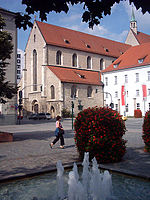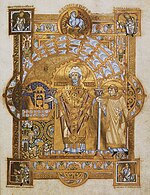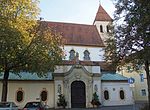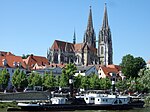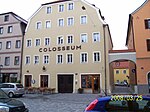Haus der Bayerischen Geschichte: Museum
2019 establishments in GermanyGerman museum stubsHistory museums in GermanyHistory of BavariaMuseums established in 2019 ... and 1 more
Museums in Regensburg
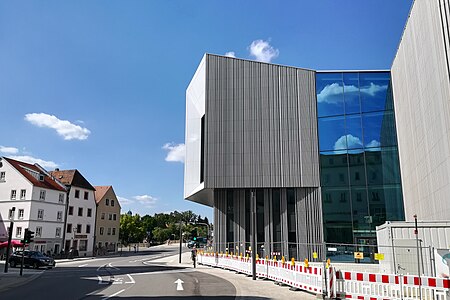
The Haus der Bayerischen Geschichte: Museum (aka Museum der Bayerischen Geschichte) is a history museum about the history of Bavaria, located in Regensburg. It is part of Haus der Bayerischen Geschichte (Munich) which is financed by the state government. It opened on June 5, 2019. The director is Richard Loibl. The permanent exhibition area measures 2500 m2 and displays c. 1,000 objects in the time span from 1806 (Kingdom of Bavaria) until the present time.The construction of the building and the interior cost c. 95 million euros.
Excerpt from the Wikipedia article Haus der Bayerischen Geschichte: Museum (License: CC BY-SA 3.0, Authors, Images).Haus der Bayerischen Geschichte: Museum
Donaumarkt, Regensburg Altstadt
Geographical coordinates (GPS) Address Website Nearby Places Show on map
Geographical coordinates (GPS)
| Latitude | Longitude |
|---|---|
| N 49.0199 ° | E 12.1032 ° |
Address
Bavariathek
Donaumarkt 1
93047 Regensburg, Altstadt
Bavaria, Germany
Open on Google Maps
